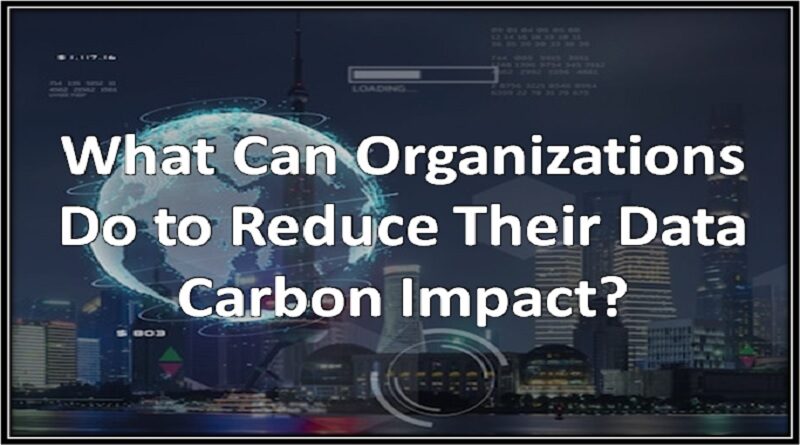What Can Organizations Do to Reduce Their Data Carbon Impact?
What Can Organizations Do to Reduce Their Data Carbon Impact?
Some industries are more neglected than others as the world continues to focus on sustainability. The UK government has ambitious plans to make all industries, including IT, carbon neutral by 2050.
On the surface, the idea that data could result in carbon emissions appears absurd: how could a virtual entity have an effect on the actual world? But the numbers reveal that the truth is much more nuanced.
Analyzing the Effects of Data Centers
There must be a place to store every text, image, and video file. The demand for data is constantly increasing in a society where social media is king. Today, data centres use about 2% of the energy consumed globally. The demand for data centres is expected to increase by 50% over the next five years, which is a more unsettling finding.
Websites are a significant source of energy use. The average website produces 6g of CO2 annually, the equivalent of driving a petrol vehicle 12,000 miles. The truth is that by making investments in website performance, much of this can be avoided. When developing their Web Vitals Index tool, which ranks the top UK e-commerce brands based on Google’s Core Web Vitals, my team looked into this.
Performance of websites has been shown to be directly related to lower energy burdens. Webmasters can lessen the load on data centres and consequently their carbon footprint by speeding up websites and optimising images. It’s not necessary to make a large investment in this. While some businesses might prefer to start from scratch, others can gain from quick wins and supplier substitutions.
Testing a website using synthetic monitoring
Testing is an essential component of website performance, and e-commerce websites require it even more. Automated tools are used in synthetic monitoring to simulate a client journey. It can detect potential conversion inhibitors, like pages that load slowly. It can also detect website downtime and security risks. With the help of this crucial information, marketers and developers can decide how to optimise JavaScript, for example.
Optimizing Images to Reduce Processing Times
Images are important in transactional websites and have a significant impact on web design. However, excessively huge photos run the danger of overtaxing servers. These may be noted in resources like the Web Vitals Index, which draws attention to problems in places like the most contentious paint.
Technology’s Top News
Simplifying Secure Access to Windows 365 Cloud PC with IGEL and VMware
These photographs can be compressed without losing quality using a basic image optimization programme. Scale makes a tremendous effect; if an image is 1MB too large, 1,000,000 more megabytes could be downloaded without a need.
Making Small Changes that Make a Big Difference
Collaboration is one of the essential ideas for long-term sustainability. This could be understood as a partnership between marketers and developers or between businesses and their suppliers. Choosing a clean cloud data centre, eschewing obsolete hardware, and lowering dependency on physical storage are good places to start. Similar to this, developers who use third-party JavaScript should check that it is effective before utilising it.
After reviewing their suppliers, businesses should search for “easy wins,” such disabling auto-play videos. These can jeopardise accessibility and are extremely energy-intensive. Similar to custom fonts, regular web-based fonts may look good but may use more energy. Although it’s important to note that third parties cannot be tuned, tuning JavaScript can be helpful for those who are working with their own code. All of these adjustments may affect page speed, which may boost conversions by as much as 7%.
How Will These Changes Affect the Client?
Organizations should prioritise decreasing their carbon footprints, but there are additional factors to take into account. With 83% of consumers worried about the sustainability of their shopping habits, today’s consumer is more socially conscious than ever. This means that they are more sceptical of tactics like “greenwashing” since they require verifiable proof that businesses are making every effort to minimise the harm they cause.
Giving clients genuine assurance can be achieved by using excellent practises like switching to green suppliers. Customers will be better able to make decisions if there are quantifiable statistics available, such as a website’s carbon footprint. Customers will also have a better experience and be more motivated to return with faster page loading speeds.
Although the energy requirements of data are fairly shocking, the tide is turning as a result of increased knowledge and government measures. To ensure that we keep moving in the right direction, we all have a part to play. We may start by engaging in these activities.




